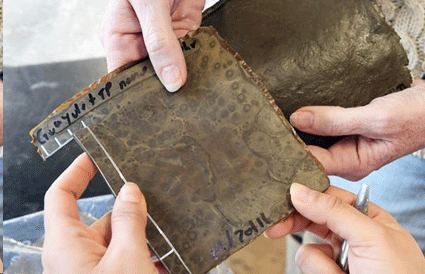|
NOVIDADES
Researchers at The Ohio State University have discovered a method to convert food waste into a replacement for the petroleum-based filler that has been used in manufacturing tires for more than 100 years. In tests rubber made with the new fillers exceeded industrial standards for performance, which may ultimately open the door for new applications for rubber.  Researchers have discovered that food waste could be used as a filler to make automobile tires. Créditos: RandD Katrina Cornish, an Ohio Research Scholar and Endowed Chair in Biomaterials at Ohio State, said the technology has the potential to make the manufacture of rubber products more sustainable, reduce American dependence on foreign oil and keep waste out of landfills. Approximately 30 percent of a typical automobile tire is carbon black, which makes the rubber durable. However, according to Cornish carbon black is becoming more scarce. “The tire industry is growing very quickly, and we don't just need more natural rubber, we need more filler too,” Cornish said in a statement. “The number of tires being produced worldwide is going up all the time, so countries are using all the carbon black they can make. “There's no longer a surplus, so we can't just buy some from Russia to make up the difference like we used to,” she added. “At the same time we need to have more sustainability.” Cornish said her team is now collecting eggshells and other food waste items from Ohio food producers. “We're not suggesting that we collect the eggshells from your breakfast,” Cornish said. “We're going right to the biggest source.” According to the U.S. Department of Agriculture, Americans consume nearly 100 billion eggs each year. However, half are cracked open in commercial food factories, which pay to have the shells taken to landfills by the ton, where the mineral-packed shells do not break down. Another possible source for filler could be the tomato, where the majority of the 13 million tons of tomatoes Americans eat annually come in cans or otherwise processed. Commercial tomatoes are bred to grow thick, fibrous skins so that they can survive being packed and transported long distances. When food companies produce tomato sauce they peel and discard the skin. Cindy Barrera, a postdoctoral researcher in Cornish's lab, discovered that eggshells have porous microstructures that provide larger surface area for contact with the rubber and give rubber-based materials unusual properties. However, Barrera found that tomato peels are highly stable at high temperatures and can be used to generate material with good performance. “Fillers generally make rubber stronger, but they also make it less flexible,” Barrera said in a statement. “We found that replacing different portions of carbon black with ground eggshells and tomato peels caused synergistic effects—for instance, enabling strong rubber to retain flexibility.” RandD Magazine. Posted March 03, 2017, by Kenny Walter. |
|||||||||||||||||||||||||